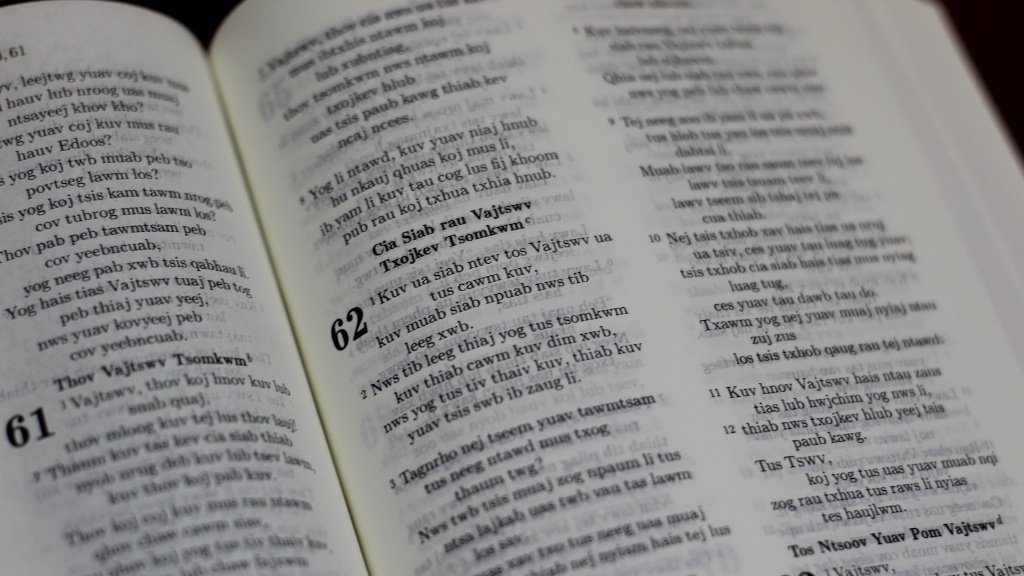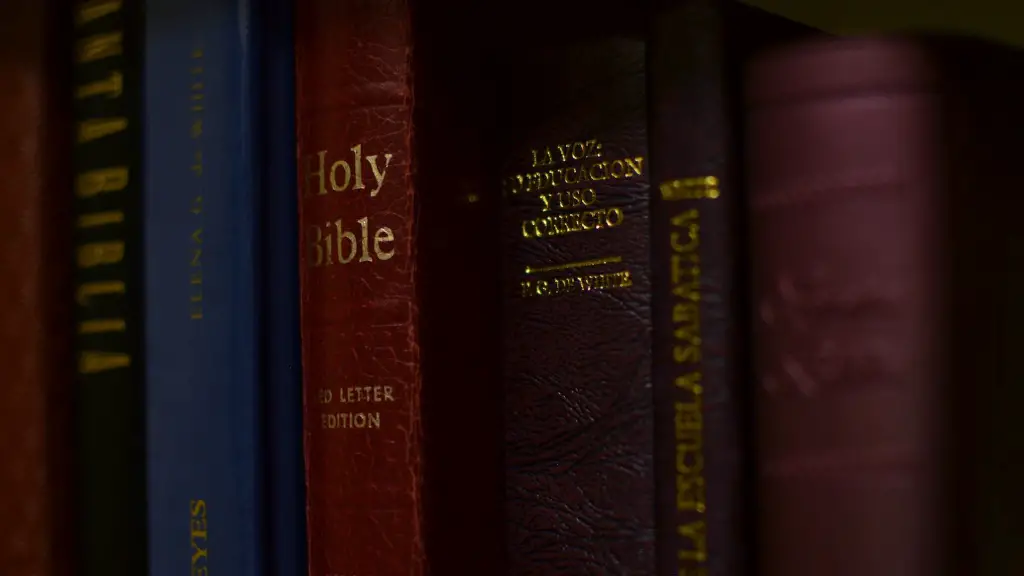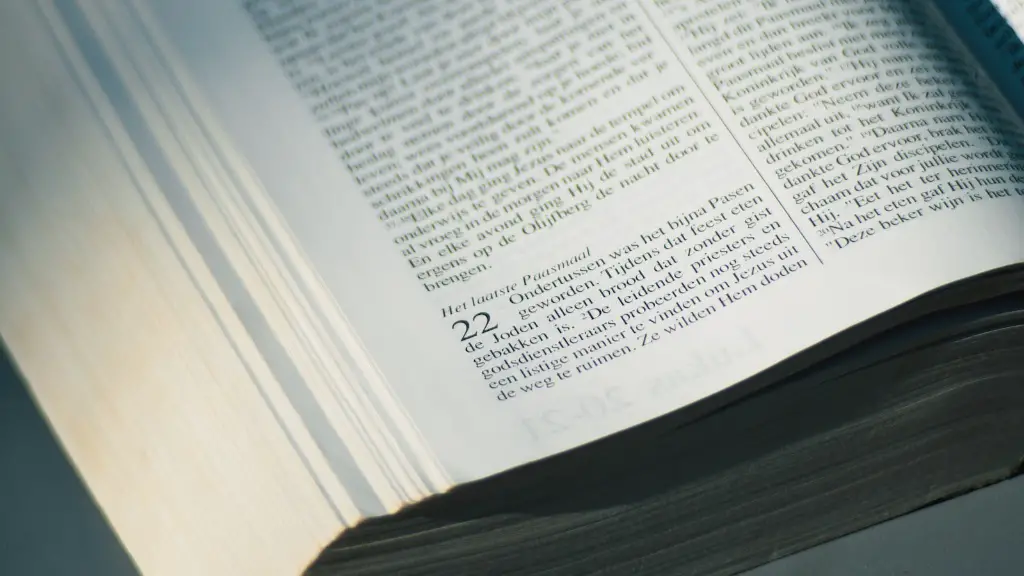The Bible is a source of inspiration for many, but does it really tell us anything about art? Could a holy book, thousands of years old, possibly be relevant to something as intangible as art? The answer may surprise you. In fact, the Bible’s view of art is surprisingly expansive and profoundly inspiring.
Many tend to think of art as something merely decorative, a way to bring beauty into our lives. But art, from the Bible’s perspective, is much more than that. According to scholars, the Bible speaks of art as a spiritual pursuit, one that can lead us to a closer relationship with the divine.
The first book of the Bible, Genesis, recounts the story of God creating the universe. Along with the creation of living things, the text also speaks of God setting the universe in order using beauty and art. This alone is a testament to the esteem in which art is held in the eyes of the Lord — it isn’t just superfluous pageantry; it is essential to the ongoing order of the cosmos.
Elsewhere in the Bible, art is celebrated in its own right. Art is seen as a celebration of God’s grandeur, rather than a simple demonstration of our own. In Exodus, for instance, the Lord commands Moses and Bezalel, a skilled craftsman, to create the tabernacle, or place of worship. This weaving together of divine vision and human craftsmanship is a reminder that art serves a spiritual purpose: to bring us closer to the divine.
Other passages in the Bible demonstrate that art was seen as an end in itself, separate from religious symbolism. Art unveiled its own beauty, in and of itself. Ecclesiastes speaks of how wisdom surpasses folly and how beautiful things take precedence over “understanding”—a possible reference to the beauty of art.
Far from a self-indulgent expression, the Bible promotes art as a tool for holiness. The prophet Isaiah, for instance, speaks of how the beauty of God’s miracles evoke worship and adoration in humans. Here, art is a reminder of the Lord’s handiwork, a reminder to serve in humility and adoration. In short, not only can art be beautiful, but it can also be spiritually uplifting.
In a world where art is increasingly seen simply as a way to beautify our spaces, the Bible reminds us of the spiritual significance of art. By exploring the beauty of creation and allowing ourselves to be inspired by our Lord’s grandeur, we can use art to reconnect with the divine.
What Is The Role Of Art Within Worship?
The Bible denotes art as a key part of worship and devotional practices. From Solomon’s elaborate temple in Jerusalem to the detailed architectural plans for the tabernacle in the wilderness, the Bible shows us that in providing a home for the divine, art plays a vital role in constructing environments of holiness and beauty. Art can also be used to invoke a sense of wonder and awe for God’s plan. The story of the Israelites crossing the Red Sea, for instance, could certainly evoke a sense of awe.
The very act of creating beautiful and elaborate artifacts invites us to contemplate the divine. As we are reminded of the power and creativity of God, creation can become a vessel of worship and devotion. By allowing ourselves to be awestruck, we can bring the beauty of creation closer to God.
But we need not wait for God to act in order to experience a spiritual connection through art. We too can create art that can result in greater faith, hope and love of the Lord. The Psalms are full of works of art created by human hands to praise God. This act of creativity to praise God is an acknowledgment that our own art can be seen as spiritually significant.
In addition, art can also be used as a way to communicate our faith and our commitment to God. The arts can also play a part in our spiritual growth. In creating a piece of art, for instance, we can be reminded of our need for God. We can be challenged to think deeper about our spiritual journey and can gain greater insight into our own relationship with the Lord.
Therefore, art, far from a merely decorative display of beauty, can be used for the greater good. Through art, we can construct an environment of holiness and an act of devotion. We can use art to express our faith and to find a deeper appreciation of God’s plan.
What Kinds Of Art Did People Engage With In Bible Times?
In Bible times, art was a vital part of life. People made use of a variety of materials, including pottery, textiles, paintings, stone sculptures and other works of creative expression. These art forms can be found throughout the Bible, ranging from the construction of the Tabernacle and Temple to the depictions of biblical figures like Moses, King Solomon and Jesus.
Artists and craftsmen played an important role in biblical culture. Artists, such as Bezalel and Oholiab, were commanded by God to build the Tabernacle, a task of great magnitude and symbolism. The Bible also speaks of skilled artisans producing a variety of objects, from brass and bronze vessels to ornate ivory furniture.
Throughout the centuries, religious art has been used as a tool of worship and contemplation. Early Christians actively utilized religious art to communicate their faith. Religious figures, scenes from the Bible and symbols of faith were used to communicate the Christian message to believers and non-believers alike.
Today, religious art continues to be used as a means to contemplate and express faith. Religious art has the power to unite us in a common faith, to remind us that we are all part of a larger, more beautiful story. While the forms and mediums have changed, religious art remains a powerful source of inspiration and contemplation.
What Are The Benefits Of Using Art To Connect To God?
Art can be a powerful way to interact with the divine. Through art, we can find a deeper and more meaningful relationship with our Creator. Here are three ways art can be used to enrich our spiritual lives:
- Creative expression: Creative expression is an important part of connecting to God. Art allows us to explore our faith, to “speak” to God as we create our pieces. As we express ourselves creatively, we have the opportunity to experience a sense of joy, peace and fulfillment.
- Gratitude: Art celebrates the beauty of creation and the grandeur of the Lord’s plan. Through art, we can thank God for the tremendous blessings we receive each day.
- Connection: Art can be used to connect people to one another — a reminder of our need for each other as part of a larger, spiritual community.
Art provides us with a powerful way to express our faith and to interact with the divine. By using our imagination and creativity to connect with the Lord, we can tap into a deeper spiritual understanding of our own relationship with the universe.
What Types Of Art Are Appropriate For Religious Practice?
The Bible encourages art in religious practice, but what types of art are appropriate? Here, we explore some art forms that have been used throughout the ages to connect religious practitioners to the divine.
- Iconography: Iconography, or traditional religious imagery, is often used in churches to represent biblical figures and stories.
- Painting:Painting has long been used to communicate religious messages. From the Renaissance masterpieces of the Church to contemporary Christian paintings, art can be used to communicate deep spiritual truths.
- Sculpture:Sculpture has also been used throughout history as a way to connect practitioners to the story of faith.
- Music: Music, from traditional hymns to modern Christian songs, is also a powerful form of art. Music has the power to bring people together and to celebrate the beauty of faith.
- Poetry:Finally, poetry can serve as a form of spiritual expression. From the Psalms to contemporary poets, artful words can provide spiritual sustenance and evoke deep feelings of connection to the divine.
The Bible is not just a book of rules and regulations, it is a source of inspiration. By exploring the many forms of artistic expression we can find in the Bible, we can uncover deeper meaning and use art to find a closer connection to our Creator.
How Can Art Be Used To Glorify God?
The Bible speaks of the importance of using our art to glorify God. The Bible is full of examples of those who use their art to give glory to God. We too can use our art to glorify the Lord and to bring more beauty into the world.
- Purposeful creativity: We can use our creativity for a purpose — for the glory of God. We can use our talents to spread the word of God, to remind others of His mercy, and to create beautiful works of art that inspire and uplift.
- To edify: We can use our art to edify or to build up the church. Art can be used to pursue holiness and to bring the church closer to God.
- For the good of others: Lastly, we can create art for the good of others. We can use our art to bring joy and healing to those who are suffering. Through art, we can be a source of comfort for those in need.
When used properly, art can be a powerful force for good. We can use art to bring more beauty into the world and to inspire and uplift. Through our art, we can glorify God and share in His divine mission of love.





